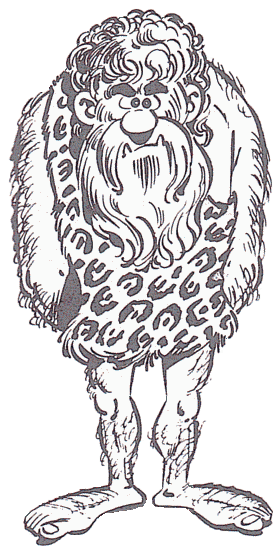|


| | |

|
At dawn of mankind , our first ancestors used to get some protection from the biting cold by covering their bodies with skins of available animals. Such garments were, of course, thick and heavy .The whole skin of a large beast being often required just to dress a single individual. Towards the lower paleolithic period, mammoths and rein-deers became scarce in and around Chécy, so the Man of Christiandiorus hit upon a sensible idea and decided to stitch together several skins of smaller animals in order to obtain less bulky and better fitting clothes : the Patchwork of Chécy
was born ..... smartness would soon follow......
At first such work was roughly made in order to fill , at low cost, the needs of domestic households, but rapidly, and in the wake of cotton becoming more available, they were decorated with various motives and patterns drawn from local lore.
| |
Paleolithic mannequin at the time of a procession (surroundings of Chécy) |
|
There are very few surviving patchworks of the times : for instance, Knights going to Crusade could wear them under their armours and horsesaddles.
In fact, the Patchwork of Chécy had become famous enough so as to be the subject of a medieval legend according to which Englishmen had fought in the area of Checy for 100 years in the -vain - attempt of gaining the local knowhow and secrets of the trade !
It is a young shepherdess from Lorraine , who, passing one day through Checy and delighted before the sight of these ornamental works, eventually exported the technique to different parts of Europe. |

| |
Young unknown factor in workshop of patchwork in Chécy
|
During the conquest of the American West,as from the 17th century, the pioneers brought their traditions to the new World and so, America became in the 19th century the cradle of a rich heritage.
Patchwork fell out of fashion after the first World War, but, nowadays, it has found a renewal, due less to the need of recycling discarded fabrics than to the enjoyment of practising a useful pastime. |